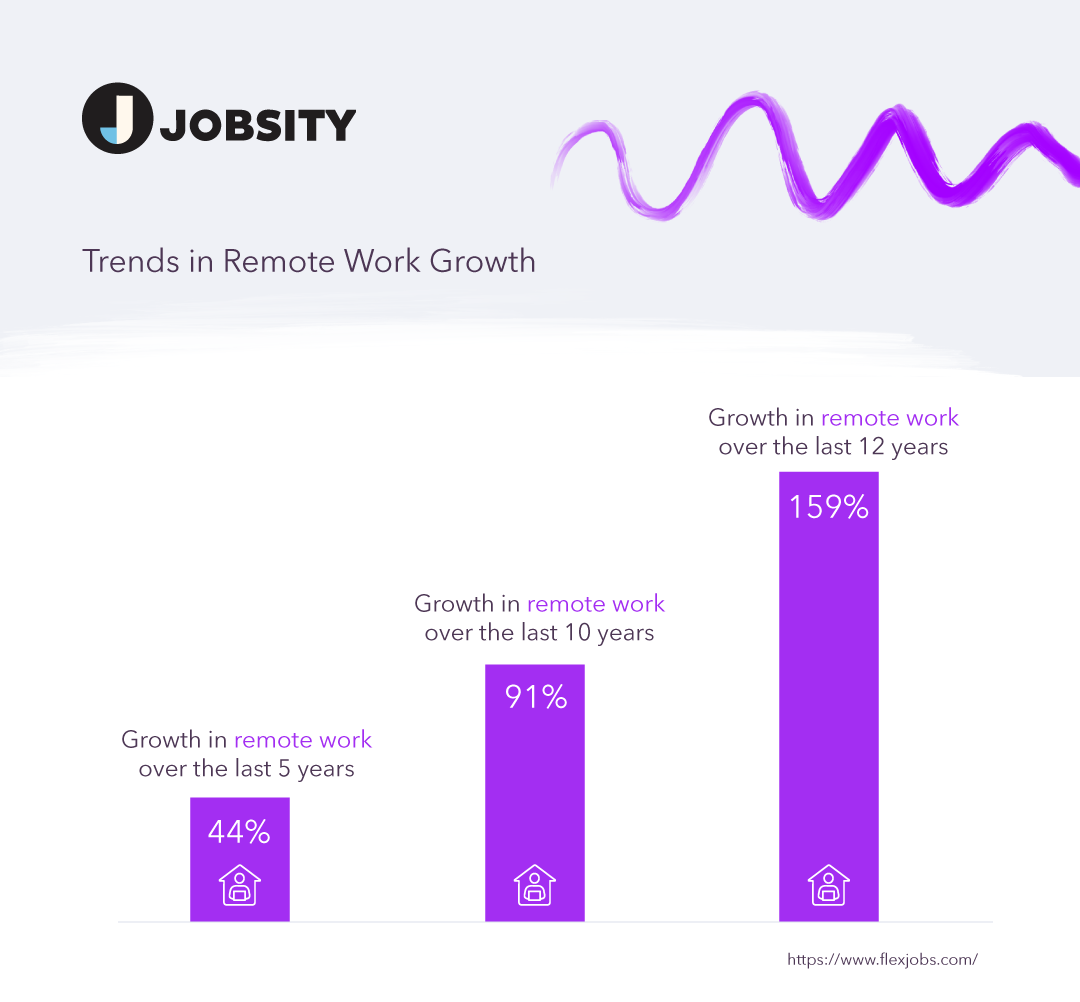The Evolution of Remote Work in the US: From A Trend to a Mainstay

In the last four months, as the Coronavirus pandemic has forced millions of Americans school kids, grandmothers, and workers to shelter in place at home to avoid spreading infection, remote work has become a way of life in the US. But even before COVID-19 spread throughout the 50 states, it had already become a dominant force in American working culture, and after COVID-19 is no longer a threat, it seems it’ll be here to stay.
According to the FlexJobs and Global Workplace Analytics Report, between 2005 and 2017, there was a 159% increase in Americans working remotely. So much so that even by 2010--long before the coronavirus forced millions to work from home--13.4 million Americans, or 3.4% of the entire national population, worked remotely at least once per week. According to Credit Summit, 58% of the US workforce is working remotely as of 2022.

When did this trend begin? And is it just that--a trend--or is it a change of lasting important for American workers?
Before the Industrial Revolution, almost everyone worked at home. But since the early 1900s, the prevalence of new technology like the telegraph, the telephone, and the typewriter, laid the groundwork for office work. By the 1970s, in-office work was the dominant form of white collar work in the US. With the exception of those who worked from home telephones--namely, those working in certain call centers or doing sales via phone (think: Tupperware, or Mary Kay)--most Americans commuted to work, whether it was in an office, a factory, or a school.
Then in 1979, as rudimentary personal computers became rare but useful tools used in some industries, remote work began to seem like a possibility. That year, IBM allowed 5 of its employees to work from home--as an experiment. The results were productive and other companies followed suit.
Around that time, Jack Niles, a NASA communication systems designer, coined the term “telecommuting” in reference to the work he was doing--at home--for that agency. And as the oil crisis increased the price of gasoline, Frank Schuff, writing in the Washington Post, expounded on the potential cost-saving benefits of remote work in this article, “Working From Home Can Save Gasoline.”
But it wasn’t just employee costs that could be saved from remote work. By 1983, IBM had over 2,000 employees working from home, and they continued to experiment with “remote terminals” installed at employees’ homes, reducing the need for expanded office space and rent. (By 2009, they would employ over 150,000 remote workers, and claim over $100 million saved in office rental fees alone).
Then, in the early 1990s, with the advent of fast ethernet internet, and wifi, remote work became an expanded possibility for many more workers. At that time, as personal computers became more prevalent, and at-home internet allowed workers to communicate easily and quickly with their bosses and teams from home offices, significantly more workers were given the freedom to spend one day, and sometimes more, working away from HQ. The results were positive, and the “trend” became something like a rising tide.
Between 1997 and 2010, 35% more Americans began to experiment with working from home at least one day per week. According to the Census that year, 35% of those workers worked from home Mondays and Fridays. That year, President Obama even signed the Telework Enhancement Act, which allowed Federal employees more support and protection so that they, too, could work from home. By then it was not just tech workers and salespeople that worked from home--but private and public sector professionals in all industries as well.
.png)
Since 2010, over the past ten years, this shift in American working habits has continued to gain steam. As social networking applications were developed specifically for inter-office communication (beginning with Yammer in 2008 and Slack in 2013) and Cloud-based programming has made multi-location collaboration not only easy, but safe and productive (think: G-Suite and Microsoft Teams), remote work has become as efficient and conducive to effectiveness (if not more so!) than in-office work ever was.
And no surprise: According to FlexJobs, 85% of businesses confirm that productivity has increased in their company because of workplace flexibility, while 77% say allowing employees to work remotely leads to lower operating costs. Not to mention that 90% of employees say allowing for more flexible work arrangements and schedules increases their morale.
It’s likely for this reason that the Gartner CFO Survey found that “3 in 4 CFOs plan to shift 5% or more of their on-site employees to permanently remote positions after COVID-19.” Which is just another way of saying: even after COVID-19 is a dark memory in our collective past, remote work will likely continue to be the dominant way Americans work. Not a trend, but the future of American work.
Interested in diversifying your talent pool and strengthening your company with a remote team of developers? Drop us a line! Jobsity is the nearshore staff augmentation choice for U.S. companies.
Mauricio has been at the forefront of technology for +15 years. He is constantly integrating new technologies including frameworks, CMS, and standard industry models. He is a pragmatic problem-solver and customizes solutions based on the best schema/language/application for each project. As the CTO at Jobsity, he ensures that his team is always up to date with the latest advances in software development by researching the software ecosystem, implementing professional development initiatives, and coordinating with new and existing clients about their needs.